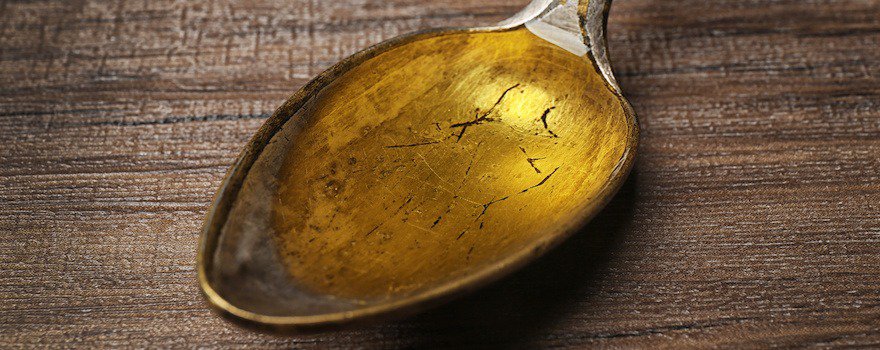What is it?
Vitamin D, also known as calciferol, is a pro-hormone primarily involved in bone growth. It has a dual origin, meaning it is both synthesized by the body and introduced into it through diet.
The synthesis of vitamin D is stimulated by the exposure of our skin to ultraviolet solar rays, specifically UVB. A minimal sun exposure is thus necessary for the body to produce it.

Vitamin D has an effect on several body functions:
- It plays a role in the absorption of calcium and phosphorus in the intestines. It ensures the mineralization of bones and joints, thus influencing bone growth. Identified in 1922 by Elmer McCollum during efforts against rickets (a disease causing delays in bone growth due to a vitamin D deficiency), it has effectively combated this disease.
- It limits bone fractures by ensuring the strength of bones and teeth.
- It limits the onset of osteoporosis in the elderly. This disease leads to a decrease in bone density, which weakens the body’s bones.
- It enhances muscle tone by promoting the renewal of muscle fibers and muscle contraction during movements.
- It provides a protective function for neuronal cells and delays cognitive decline.
- It is also thought to have protective effects against cardiovascular diseases, diabetes, and certain cancers. However, these functions have not been formally proven.
The benefits of Vitamin D
The benefits of vitamin D stem from its role in the body. Crucial for ensuring the growth and health of bones, vitamin D helps regulate blood calcium levels and phosphorus absorption. If the body were to lack vitamin D, calcium would be eliminated in urine by the kidneys.
Thus, it allows calcium to be absorbed and ‘fixed’ onto the bones, ensuring their maturation.
A vitamin D deficiency can cause rickets in children (growth delay) and osteomalacia (decreased bone density), osteoporosis (bone fragility due to decreased density), or hypocalcemia (too low blood calcium levels) in adults.
It is therefore crucial not to neglect dietary intake that provides vitamin D and to regularly check the blood level of this vitamin in the body.

Studies are currently underway to demonstrate the beneficial effects of vitamin D on reducing the progression of certain cancers (including colon cancer), limiting the onset of multiple sclerosis, Alzheimer’s disease, reducing several cardiovascular diseases, and seasonal depression.
Lire aussi | Nos conseils pour choisir la meilleure vitamine D
Note: approximately 15 to 30 minutes of sun exposure, twice a week, ensures sufficient vitamin D intake for an adult. Don’t hesitate to expose yourself to the sun when you have the opportunity to promote vitamin D synthesis. Remember to protect your skin by applying suitable sunscreen to do so.
Symptoms of deficiency
To benefit from a vitamin D supplement, it is useful to highlight the symptoms that may alert you to a potential deficiency. You should take action when you notice the following symptoms:
- Muscle pain, bone pain
- Joint pain
- Back pain
- Chronic fatigue
- Temporary depression
- Frequently becoming ill or contracting infections more often
- Changes in wound healing
- Frequent falls (especially among the elderly)
To confirm the deficiency, a blood test can be done by performing a simple blood draw. This biological examination checks the level of vitamin D in the blood and thus determines the body’s needs.
Recommended nutritional intake
Essential at all stages of life, vitamin D needs vary depending on an individual’s growth stages. Infants, young children, and adolescents in the growth process have higher vitamin needs, for example.
Reference nutrients or recommended intakes of vitamin D are expressed in micrograms (µg) or international units (IU). They are:
- Newborns/infants up to 12 months: 20/25 µg or 800/1,000 IU per day
- Children aged 1 to 3 years: 10 µg/day, or 400 IU/day
- Children aged over 36 months, adolescents aged 12 to 18 years, and adults: 15 µg/day, or 200 IU/day
- Children aged 1 to 3 years: 10 µg/day, or 400 IU/day
- Children aged over 36 months, adolescents aged 12 to 18 years, and adults: 15 µg/day, or 200 IU/day
- Over 75 years: 10 to 15 µg/day, or 400/600 IU/day
Pregnant or breastfeeding women should be mindful of their vitamin D intake. Indeed, some scientists believe that vitamin D can help prevent pre-eclampsia and gestational diabetes.
The recommended intake of vitamin D for pregnant women is 10 µg/day, or 400 IU/day. Note: to prevent vitamin D deficiencies in young children, in France, children aged 0 to 18 months receive a vitamin supplement. This action helps limit the occurrence of rickets and promotes proper growth in children.
Top 5 foods that contain vitamin D
A few reminders: the vitamin is both synthesized by the body (from the epidermis) and provided by food. It exists in two distinct forms: vitamin D2, present in some plant elements or vitamin D3, found in animal meat. Vitamin D2 is also known as ergocalciferol, while vitamin D3 is known as cholecalciferol.
Vitamin D is present in few foods. However, it is possible to add vitamin D-rich products to one’s diet. Especially during winter when sunny days are rarer and our exposure is reduced.
1. Cod liver oil

Cod liver oil brings back bad memories for our elders. Their grandmothers used to give a teaspoon of cod liver oil to their children to ensure their good health. And they weren’t necessarily wrong!
Cod liver oil is very rich in vitamin D. It contains 250 µg per 100g. A teaspoon provides 37.5 µg of vitamin D, which is three times the recommended daily intake! It’s worth adding it to the menu to prevent deficiencies. Cod liver contains 100 µg of vitamin D per 100 g.
2. Fatty fish

Fatty fish have many virtues and are definitely excellent for health. They contain omega 3, good for the brain, sleep, or to reduce stress, but also vitamin D.
Don’t hesitate to add sardines, tuna, mackerel, or salmon to your meals to benefit from their advantages.
To avoid preparing dishes that are too high in fat, it is preferable to consume this type of fish grilled, baked, or in foil, accompanied by vegetables and starches.
3. Eggs

Eggs, rich in protein, are beneficial for the brain. They also contain vitamin D (0.94 µg/egg).
Eggs are ideal for evening meals. To be consumed hard-boiled, in a salad or omelet, accompanied by a soup, green vegetables, or a green salad, indeed.
4. Milk and dairy products

Milk, butter, yogurts, and cottage cheese contain vitamin D. Some dairy products are even fortified with vitamin D and marketed for their benefits on growth and bone strength. It’s a marketing argument, sure, but a proven one.
To be consumed at breakfast, lunch, or dinner as dessert or for a snack (a glass of warm milk before bed), dairy products easily complement your daily menus.
5. Mushrooms

Mushrooms, especially chanterelles, morels, or shiitake mushrooms (Japanese mushrooms) are also a source of vitamin D. The advantage of these foods is that they are low in calories. One can consume them in large quantities.
Cooking mushrooms in a pan, in vegetable oil rich in omega 3, allows you to create delicious accompaniments for your meats and fish. They can be consumed with a portion of starches to compose nourishing and healthy meals.
Dangers and adverse effects, vitamin D overdose
We now know the effects of vitamin D deficiencies. What happens when vitamin D intake is too high? What are the risks of overdose?
Vitamin D overdoses have become rare because intakes are better controlled.
However, overdoses can cause hypercalcemia (excessive calcium levels in the blood), leading to hypercalciuria (excessive calcium in the urine). Excessive blood calcium concentration can lead to kidney stones (“little stones” in the kidney).
These stones can cause significant pain and lead to complications such as renal colic. The deposition of calcium in the kidneys is called nephrocalcinosis, a kidney disease that can also result from vitamin D overdose.
Hypercalcemia occurs when a person is exposed to doses exceeding 40,000 IU/day. The symptoms of vitamin D overdose are as follows:
- Nausea or vomiting
- Fatigue/lethargy
- Headaches
- Dehydration/extreme thirst
- Weakness and muscle pain
- Anorexia
- Increased blood nitrogen levels (azotemia)
To avoid deficiencies or overdoses, it is important to assess the vitamin D level in the blood by conducting regular blood tests. These tests are performed on medical prescription.



